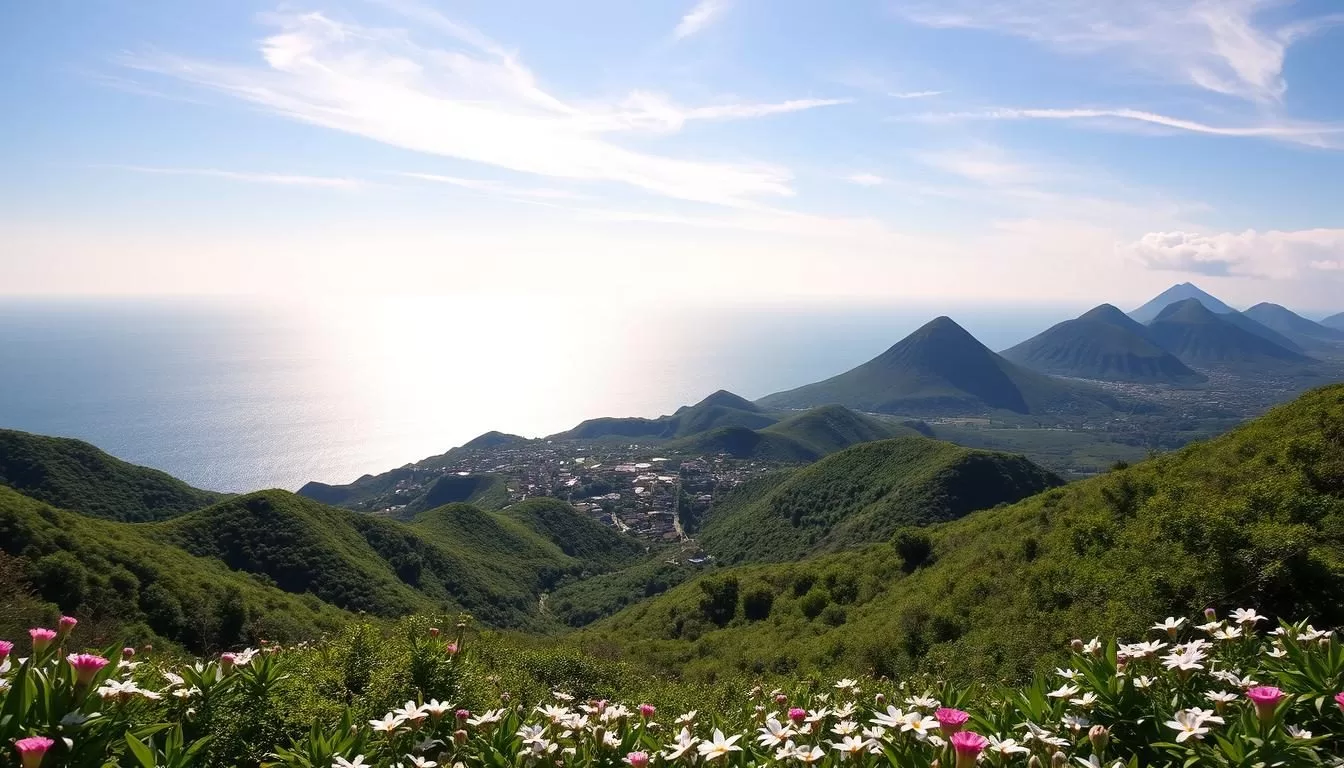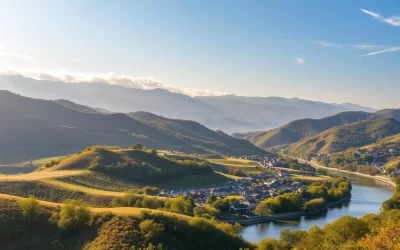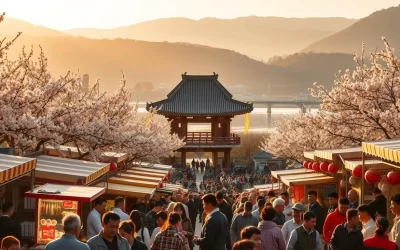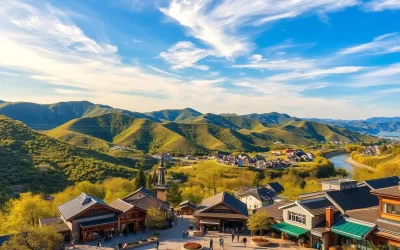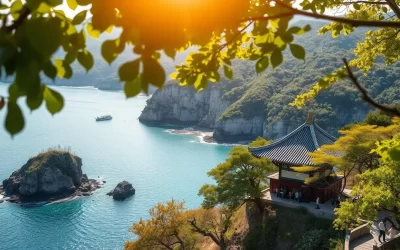Planning a trip to Jeju Island, South Korea‘s volcanic paradise, requires more than just picking a date. The island’s unique geography creates distinct weather patterns and seasonal experiences that differ significantly from the mainland.
As you consider your travel plans, understanding Jeju’s climate variations is crucial. Each season offers a distinct personality, transforming the island in ways that will captivate even the most seasoned travelers. Whether you’re drawn to experiences like cherry blossoms, beach weather, autumn foliage, or serene winter landscapes, Jeju has something to offer.
To make the most of your visit, it’s essential to identify the best time to go based on your preferences and comfort levels. This guide will walk you through Jeju’s year-round weather patterns, helping you plan your trip for an optimal experience.
Discovering Jeju Island’s Unique Climate
Jeju Island’s weather is a key factor in determining the quality of your trip to this South Korean paradise. The island’s climate is characterized by its geographical features, which create diverse microclimates.
Jeju’s Geographical Features and Microclimates
Jeju Island, located off the coast of South Korea, is influenced by its unique geography. The island is home to Hallasan Mountain, the highest peak in South Korea, which significantly impacts its climate. This results in varied weather conditions across different parts of the island, creating multiple microclimates.
| Region | Climate Characteristics | Popular Activities |
|---|---|---|
| Northern Jeju | Milder winters, cooler summers | Visit green tea plantations, explore coastal towns |
| Southern Jeju | Warmer temperatures, more rainfall | Enjoy beaches, water sports, and tropical fruits |
| Hallasan Mountain Area | Cooler temperatures, potential snowfall | Hiking, nature exploration, and scenic views |
How Weather Impacts Your Jeju Experience
The weather on Jeju Island directly affects the quality of your travel experience. For instance, clear weather is ideal for visiting outdoor attractions like Seongsan Ilchulbong and the Olle hiking trails. Seasonal changes also bring different landscapes, from cherry blossoms in spring to golden autumn foliage. Understanding these weather impacts helps you plan your visit to South Korea during the best time for your preferred activities and experience.
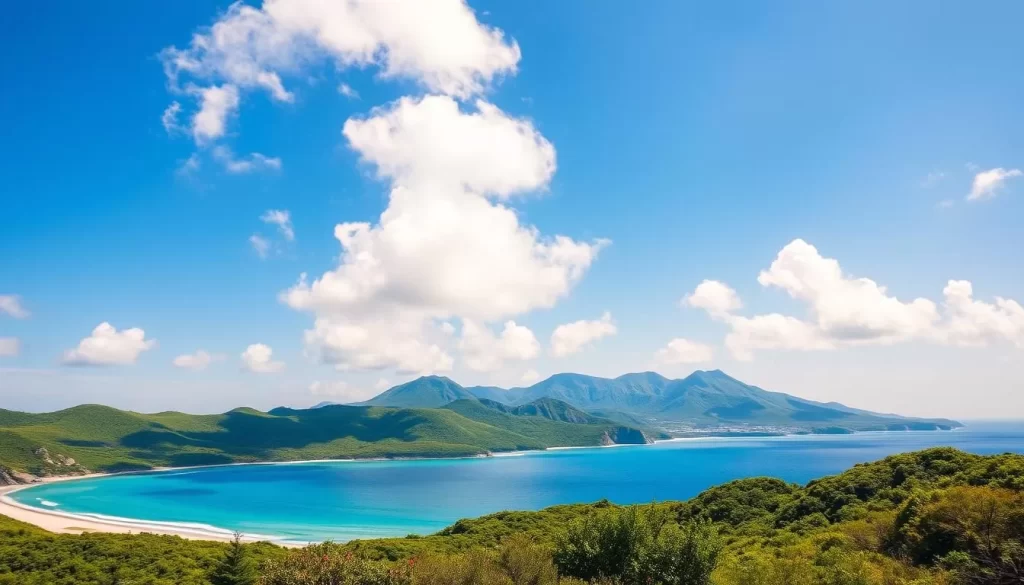
Spring in Jeju: Cherry Blossoms and Mild Temperatures
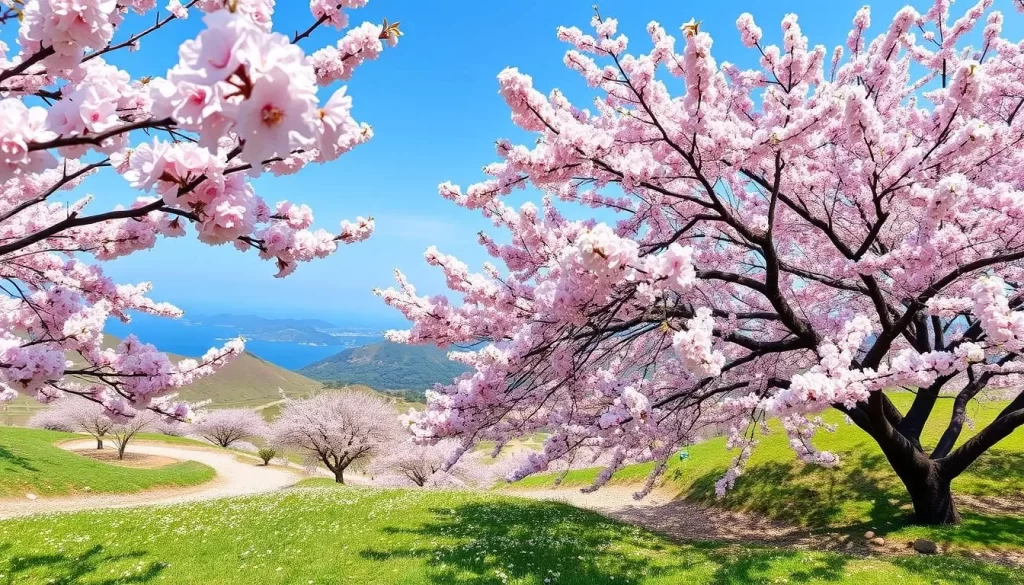
As spring unfolds, Jeju Island transforms into a vibrant landscape of cherry blossoms and mild temperatures, making it an ideal time to visit. The island comes alive with a variety of outdoor activities and festivals that showcase its natural beauty and cultural heritage.
March to May Weather Patterns
The spring season in Jeju, spanning from March to May, is characterized by gradually warming temperatures and decreasing rainfall. By March, the average high temperature reaches around 17°C (63°F), making it perfect for outdoor activities like hiking and exploring the island’s scenic trails.
Cherry Blossom Viewing Opportunities
Jeju Island is renowned for its breathtaking cherry blossom displays. The blossoms typically bloom in late March to early April, creating a picturesque landscape that attracts visitors from all over. Popular spots for cherry blossom viewing include the roadsides and parks around the island, which are lined with these beautiful trees.
Spring Activities and Festivals
Spring is a vibrant season in Jeju, with numerous festivals and activities that celebrate the island’s natural beauty and culture. You can enjoy spring golf at Jeju’s prestigious courses, which feature immaculately maintained fairways against backdrops of flowering trees. Other highlights include the Jeju Fire Festival, typically held in March, and the Jeju Canola Flower Festival, which takes place from mid-March to early April.
The island also offers a range of unique experiences, such as private foraging for rare spring delicacies, which are then used to create exclusive multi-course dinners. Additionally, you can relax at one of Jeju’s best spas, indulging in spring wellness retreats that feature seasonal botanicals and specialized treatments available only during this fleeting season.
Summer in Jeju: Beaches and Tropical Vibes
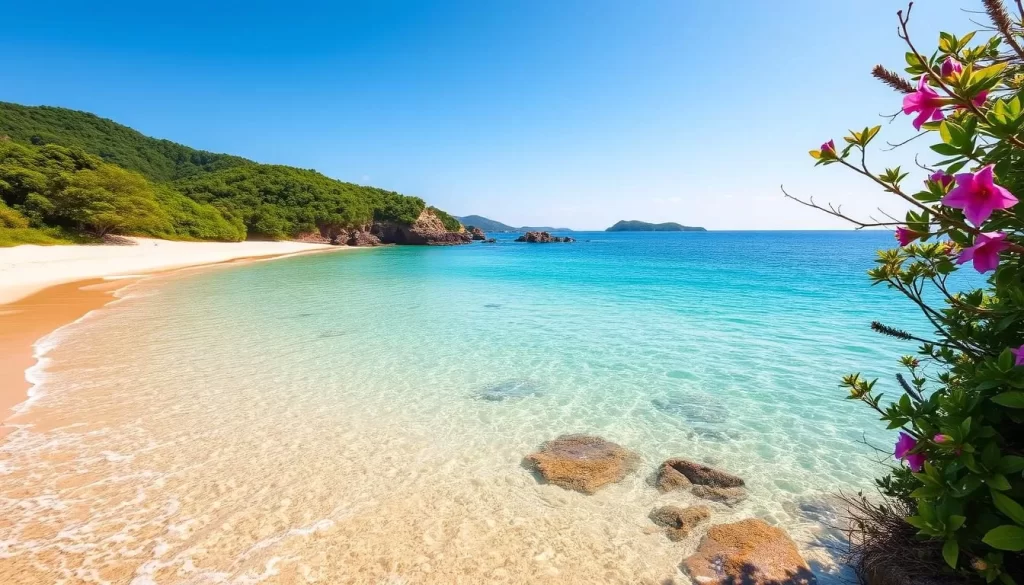
As summer unfolds, Jeju Island transforms into a tropical paradise, beckoning travelers with its pristine beaches and vibrant atmosphere. The island’s unique charm during this season is characterized by warm weather, crystal-clear waters, and a wide range of activities that cater to all interests.
June to August Climate Conditions
Summer in Jeju is marked by warm temperatures, with average highs often reaching the mid-80s to low 90s Fahrenheit (30-32°C). The climate is generally humid, but the ocean breezes provide a cooling effect, making the weather feel more comfortable.
Navigating Summer Humidity and Rainfall
While summer is the wettest season in Jeju, the rainfall is often in the form of short, intense showers, followed by sunshine. Being prepared for occasional rain and humidity can help you navigate the season comfortably. Staying hydrated and taking breaks in shaded areas can make your summer experience more enjoyable.
Best Summer Water Activities and Coastal Experiences
Jeju’s beaches come alive during summer, with Hyeopjae and Hamdeok beaches being particularly popular for their white sand and clear turquoise waters. You can enjoy snorkeling and scuba diving experiences, with peak underwater visibility occurring in August. Other activities include coastal hiking along the Olle Trail, water sports like jet skiing and paddleboarding, and sunset cruises that offer magical evenings with extended twilight hours.
The island’s famous female free divers (haenyeo) are most active during summer months, and you can watch their impressive diving demonstrations at specific beaches. Seafood restaurants along the coast serve the freshest catches during summer, with outdoor dining options that allow you to enjoy ocean views with your meal.
Autumn in Jeju: The Golden Season
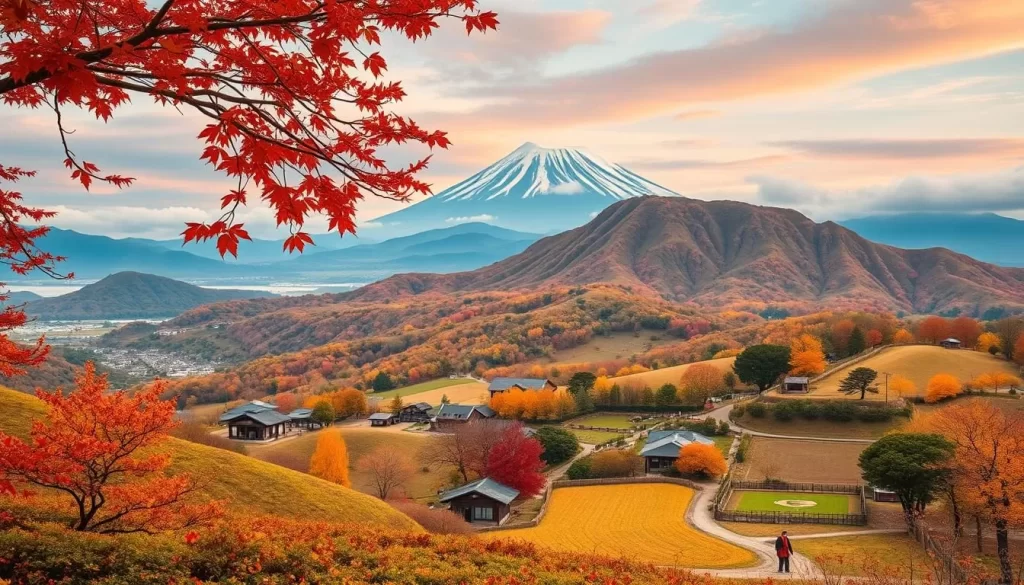
Autumn in Jeju is a season of harvest, celebration, and breathtaking landscapes. As the summer heat dissipates, the island transforms into a haven of golden hues, vibrant foliage, and cultural festivities.
September to November Weather Overview
From September to November, Jeju experiences mild temperatures, making it an ideal time to visit. The weather is characterized by comfortable warmth and a decrease in humidity, perfect for outdoor activities and exploring the island’s natural beauty.
Hallasan Mountain and Autumn Foliage
Hallasan Mountain, Jeju’s iconic landmark, is a must-visit during autumn. The mountain’s foliage is a spectacle, with trees turning into shades of orange, red, and yellow. It’s a tourist favorite, offering numerous hiking trails and breathtaking viewpoints.
Harvest Festivals and Cultural Experiences
Autumn in Jeju is also a time for harvest festivals and cultural experiences. You can participate in traditional South Korean harvest celebrations, including local versions of Chuseok, and enjoy the island’s unique cuisine, which features fresh seafood and local vegetables. The season offers a rich tapestry of cultural events and experiences, making it a great time to visit Jeju.
Winter in Jeju: Serene Off-Peak Exploration
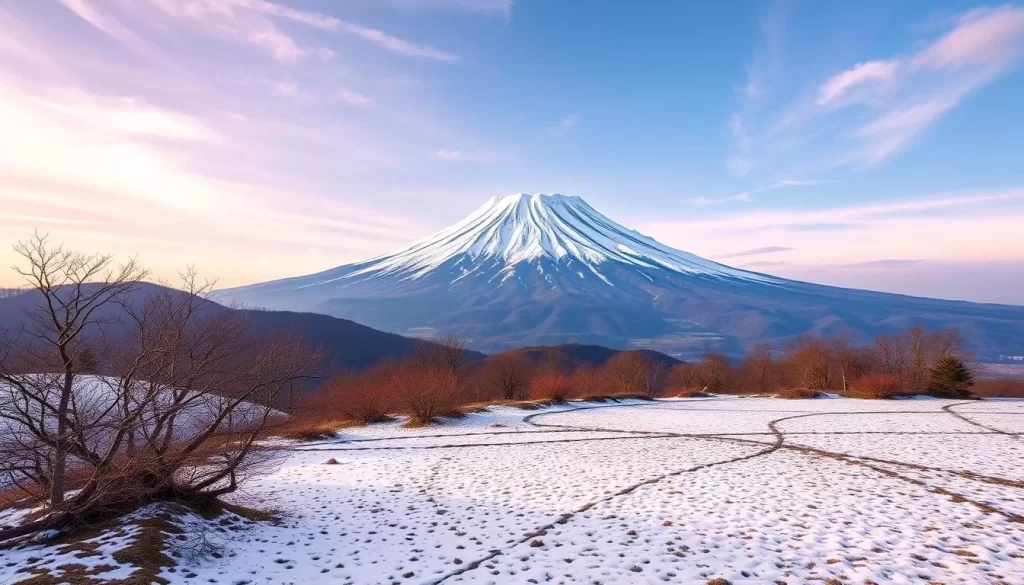
Discover the peaceful side of Jeju during the off-peak winter season. The island transforms into a serene getaway, offering a unique travel experience without the crowds. You’ll have the opportunity to enjoy iconic attractions like Seongsan Ilchulbong and Cheonjeyeon Waterfall in solitude.
December to February Temperature and Conditions
During the winter months, Jeju experiences mild temperatures compared to the Korean mainland, making it an attractive destination for those seeking a winter escape. Winter days are characterized by clear skies and crisp air, ideal for outdoor activities.
Winter Wellness: Hot Springs and Indoor Attractions
Indulge in Jeju’s renowned hot springs and indoor attractions to rejuvenate during the winter season. Luxury resorts like Grand Hyatt Jeju offer exclusive wellness programs, while indoor facilities such as museums and cultural centers provide a glimpse into the island’s rich heritage.
Advantages of Visiting During the Off-Season
Visiting Jeju during the off-season has its advantages. You’ll enjoy lower accommodation rates, experience popular attractions without the crowds, and have a more personalized travel experience. The best time to visit Jeju for a serene getaway is indeed during the winter months, when the island is at its most peaceful.
Jeju Province, South Korea: Best Months for a Weather-Savvy Trip
Jeju Island’s charm is accessible throughout the year, but savvy travelers know that certain times offer more ideal conditions. Understanding the optimal times to visit based on your preferences and being aware of local holidays and peak tourist seasons can make a significant difference in your travel experience.
Optimal Times Based on Your Travel Preferences
Your travel preferences play a crucial role in determining the best time for your Jeju trip. If you’re looking for mild weather and beautiful cherry blossoms, spring (March to May) is an excellent choice. For those who enjoy tropical vibes and beach activities, summer (June to August) is the peak season. Autumn (September to November) brings comfortable temperatures and stunning foliage, making it ideal for hiking and outdoor activities. If you prefer serene landscapes and don’t mind cooler weather, winter (December to February) could be your best bet.
Making ideal use of your time involves aligning your visit with the activities and experiences you enjoy most. Whether it’s exploring Hallasan Mountain, enjoying water sports, or simply relaxing on the beach, Jeju has something to offer in every season.
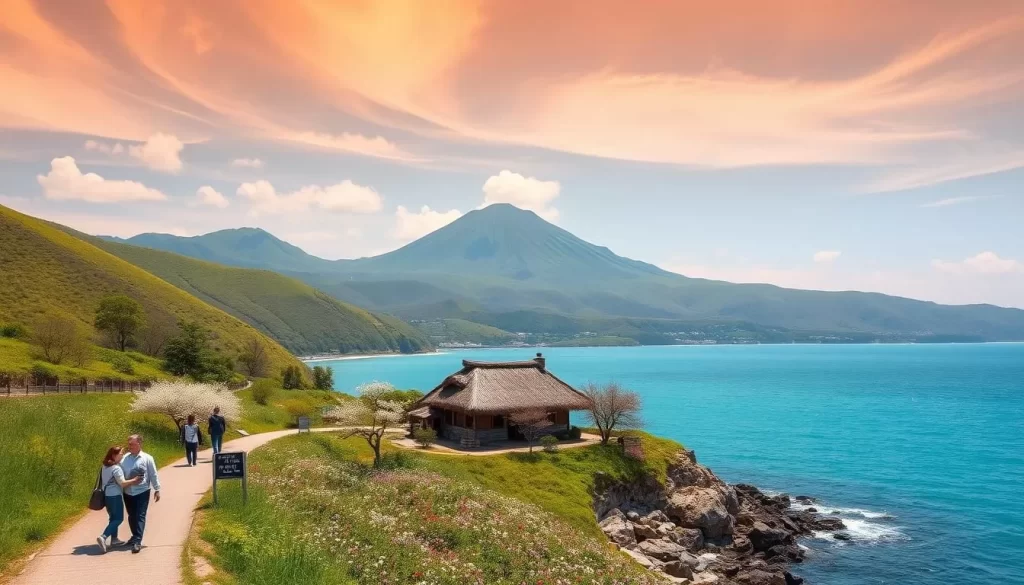
Planning Around Korean Holidays and Peak Tourist Seasons
It’s essential to be aware of Korean holidays and peak tourist seasons when planning your trip to Jeju. Holidays like Seollal (Korean Lunar New Year) and Chuseok (Korean Thanksgiving) attract large crowds and can impact the availability of services. These periods, typically occurring in January/February and September/October respectively, are times when many businesses close, and popular destinations are crowded.
Additionally, summer school holidays in July and August, as well as Golden Week in early May, can bring significant crowds to Jeju. Planning your visit around these times or being prepared for the crowds can help you make the most of your time on the island.
- Avoid visiting during Seollal and Chuseok if you prefer fewer crowds.
- Be prepared for increased Japanese tourists during Golden Week.
- Summer holidays attract families and beachgoers.
Conclusion: Making the Most of Jeju’s Seasonal Charms
Jeju Island’s diverse seasonal attractions make it a year-round destination for travelers seeking unique experiences in South Korea. The island’s distinct seasonal highlights – from spring cherry blossoms to summer beaches, autumn foliage, and winter serenity – cater to different travel preferences and priorities.
You can now make informed decisions about the best time to visit Jeju based on your interests, whether you prioritize outdoor activities, cultural experiences, or simply enjoying the island’s natural beauty. With proper planning, you can experience Jeju Province at its best, with weather conditions that complement your travel dreams.
Regardless of when you visit, Jeju’s volcanic landscapes, coastal beauty, and cultural richness provide a fascinating backdrop that transcends seasonal variations. Consider extending your South Korea itinerary to experience Jeju during its optimal season.
